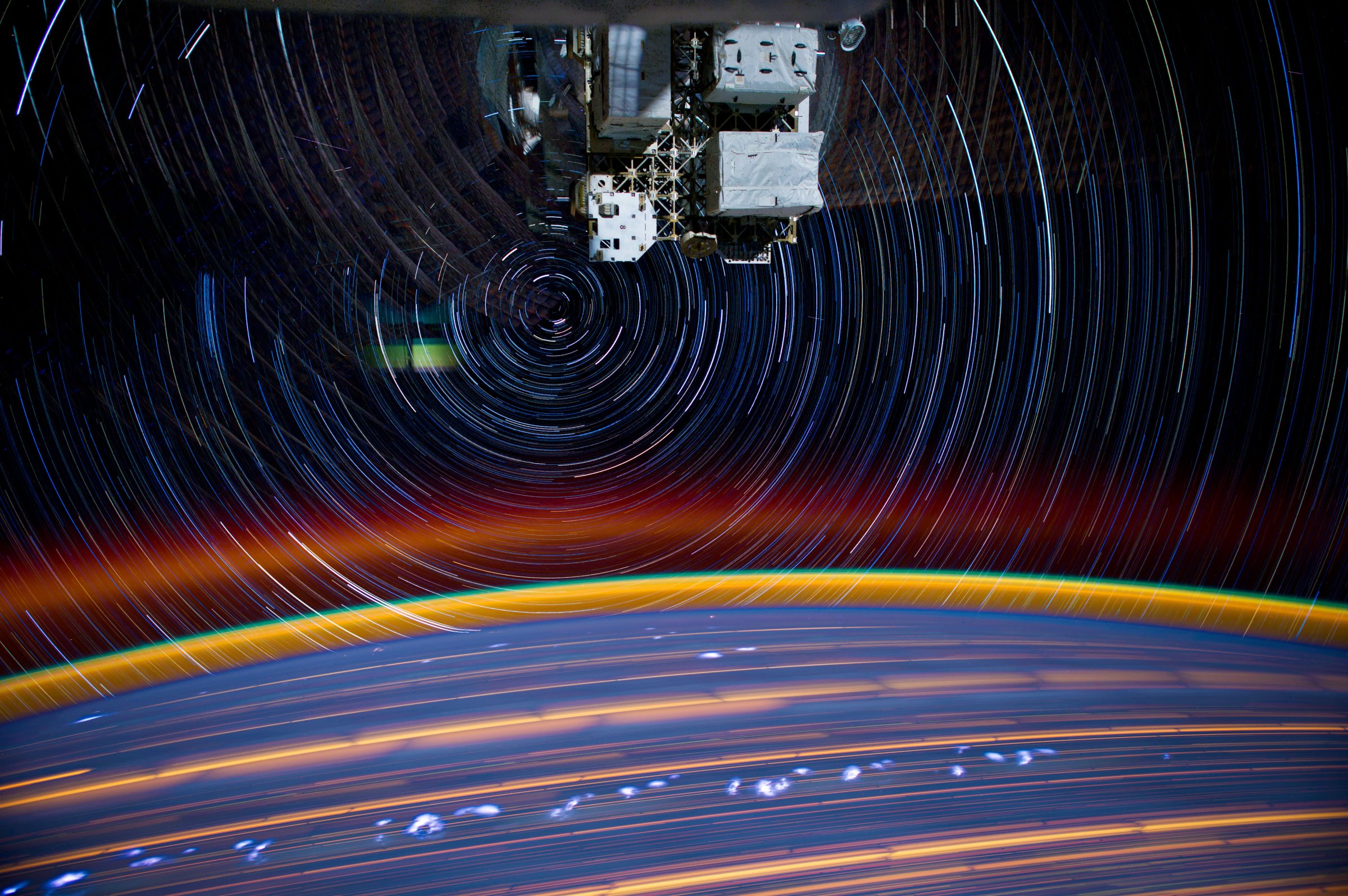
Correction appended, July, 17.
The poet James Fenton said, “One does not become a guru by accident.” Such is the case with NASA astronaut Donald Pettit, arguably the guru of photography when it comes to making pictures from the International Space Station (ISS). Pettit, who holds a doctorate in Chemical Engineering, has made three visits to the ISS since 2002, spending a total of 370 days in space. His enthusiasm for every challenge he approaches — both as an astronaut and as an image maker — is as infectious as his intelligence is intimidating (if you haven’t seen this video of Pettit fashioning a didgeridoo out of vacuum hoses on the Space Station, pause and watch it now). TIME speaks with Pettit, who shares his insights into what astronauts face when they make pictures from the ISS, some of the mad-genius solutions he came up with during his time there, and his mind-bending thoughts on the implications of photographs taken in space.
Mia Tramz: Could you describe what kind of background you had with photography before you went up to the International Space Station?
Donald Pettit: I’m always an amateur at photography, but I’ve been doing it since I was in the sixth grade. I started off with a Kodak Brownie. I could only afford to do black-and-white, and I developed all my own film and did my own darkroom work. And so I’ve been doing photography as an avid amateur ever since, and I tend to bring photography into whatever technical discipline I’m doing, whether it’s high-speed photography when I was an undergraduate; photomicroscopy; macrophotography; and amateur astronomy stuff. Photography has [always ]been a central part of my life and my career.
MT: TIME actually just got to do a video-chat with Reid Wiseman, Steve Swanson and Alexander Gerst on the ISS last week. Have they come to you and asked for any advice on how to photograph from the Space Station?
DP: I’ve been corresponding with them via email to help them set up some photo situations. One of my ground jobs right now is to write a technical report on photography in space. My working title is Astronauts’ Guide to Photography in Space. It’s written for astronauts, so it basically assumes that if I’m talking about going into the PMA and doing something that you know what the PMA is. It’ll probably be 50 pages. It doesn’t say anything about how to use the cameras, it assumes that you know how to use our Nikon D3S’s and D4’s. It just tells you how you should be setting the camera up for different situations.
For example, matrix metering works great down here on Earth, but when you are in space and say you’re taking an oblique picture of Earth where about half the frame is just jet black space and the other half of the frame is bright Earth, matrix metering may not do the best job.
[Or] say you have a visiting vehicle coming up — maybe it’s a European cargo vehicle or a Japanese unmanned cargo vehicle, or maybe one of the American cargo vehicles like Dragon or Cygnus — and as they approach you want to get pictures. But you’ve got this little spot of white surrounded by inky blackness, and again, if you just use standard matrix metering it isn’t going to work. Because you’re in this unusual environment… You have to use some photographic skills to get the good pictures.
MT: In what ways are light and shadows different when you’re photographing on the Space Station?
DP: Actually very good question. Exo-atmospheric is really, really bright. You know the sunny 16 rule, which is F16 at one over the ISO for a shutter speed? If you follow that rule, you basically can’t go wrong for standing outside in the summertime with a nice sunlit scene. The sunny 16 rule applies to being in orbit, but you have to stop down two more stops because it’s a lot brighter. So that’s an example: Being exo-atmospheric, the sun is a lot brighter.

Shadows on Earth are moderated by the atmosphere. Shadows on pieces of your spacecraft — say you want to take a picture of the truss system or another module or something like that — are really, really stark because there’s no atmosphere in which to make scattering and kind of fill in some gray area in the shadow. It’s either jet-jet black or really, really bright. If you’re taking pictures of spacecraft structure outside, either through a window or when you’re doing a space walk, it’s a high dynamic range environment.
MT: So before you ever went up to the Space Station for the first time, how did you prepare for all of this? Was there some kind of training?
DP: We have a group, we call it Photo TV Crew Training and Flight Support here. They support all the photographic needs for crew in training and crew on orbit. We’ve got some really sharp people. A good portion of them are IT graduates [from the] Rochester Institute of Technology. They teach us how to use these complicated professional level cameras. And when we run into issues, like junk all over the sensor, they walk us through how to clean them and things like that. They’ve got a standard profile for training us, and everybody goes through that, which gets you prepared for when you’re on orbit. And then once you do show up on orbit, you have to figure some things out for yourself, of course.
MT: What was the most surprising thing that you weren’t expecting in regards to photography when you got up to the Space Station?
DP: How quickly the Earth goes by. Say you want to get a good picture of some spot on the ground — maybe you want to get a picture of the Eiffel Tower, the Pyramids, or your hometown. If you don’t have everything set up you’ll miss the shot. You have 10 to 15 seconds of prime time being over that site to get your picture.
Generally speaking we don’t turn any of the cameras off [on the Space Station]. We don’t put lens caps on. The cameras that are staged next to the window [of the cupola] are just set up ready to go. And we’ll have one camera with a 200 millimeter telephoto lens, and another camera with a 14 millimeter wide angle lens, and we’ll have three or four cameras set up in between, because when you’re taking pictures you don’t have time to change lenses. So you just grab one camera, go click click click set it down, grab another camera, click click click, grab another camera, click click click. And there’s your 10-second window to get a picture of your hometown or the Pyramids.
If you’re in the process of doing this and you grab a camera and somebody before you had either put the lens cap on or turned the camera off, and you were expecting it to be set up ready to go — if you grab the camera and go, “Unh!” and nothing happens, and you stop and you look — “Oh, it’s turned off.” And then — “Oh, the lens cap’s on.” By the time you deal with that, your target is gone.
MT: How many cameras are kept in the cupola?
DP: We keep about eight cameras. And they’re all set up a little differently. Some of them are set up for nighttime, aurora, and other kinds of photography, some of them are set up for high-speed daytime photography with long telephoto lenses, and some of them are set up with extreme wide-angle lenses to get daytime wide-angle obliques of Earth and space and everything in between.
MT: So I’ve seen some videos of you speaking about space photography and I was wondering if, for our readers, you could explain what a barn door tracker is and how that applies to the rig that you made on the Space Station.
DP: Okay. I’m an amateur astronomer, and amateur astronomers make this thing they call a barn door tracker. You take a couple hinges and two pieces of plywood and a bolt, and you hinge the two pieces of plywood on one side. You have the bolt going through so you can turn the bolt and change the angle between the hinges. And then you mount a camera on it, and if you orient this so the hinge line is pointing towards Polaris, by turning the bolt you will actually hinge the piece of plywood so it moves with Earth’s rotation. Then if you know what the thread pitch is on your bolt, and the little geometry of this, you might know that if I turn the bolt a half a revolution every 15 seconds that [it] will keep up with the Earth’s motion.
Now you put a camera on there. This is not for telescopes — this would be for wide field astro photography, where maybe you have an 80 millimeter lens on a 35 millimeter camera. You open the shutter and turn your little bolt a half a revolution every 15 seconds and that, you know, over the course of a 3- or 4-minute exposure, will basically compensate for Earth’s motion. And when you close the shutter you’ll have a picture where stars will be nice pinpoints. So that’s a barn door tracker. It’s a real simple, inexpensive thing that any amateur astronomer can make and take really good wide field astro photographs.
MT: And how did you apply that while you were on the Space Station?
DP: Well, I found spare parts and I basically made a barn door tracker to compensate for orbital motion so that while I was in space I could take pictures of Earth. This was at a time when we had cameras that the highest ISO was 400. To take pictures at night of Earth took a 1-second, maybe 1 1/2-second exposure. Orbital motion is so fast that if you just lock the camera on station and take a 1-second exposure it would be blurry. This barn door tracker allowed you to precisely track and compensate for orbital motion and make a 1-second-ish exposure, so you could record things like cities at night with up to 60-meter resolution.
Now the European Space Agency made a really neat computer-based tracking system, and they call it Night Pod. Instead of using this jerry-rigged homemade thing, [they have] this piece of equipment that is really, really nice. That’s on Station now and if you’ve looked at some of the city at night pictures that are coming down from Station, they’re just amazing.
MT: How did you develop the idea and the technique for your star trail photos?
DP: Well, again being an amateur astronomer, I’ve done star trail pictures on Earth, and it just seemed to me because I was there that I should do star trail pictures in space.
MT: Were you surprised with the results?
DP: Oh, yeah. You look at the star trail pictures [taken from Earth and] say, “Oh, I know all about that.” You see the stars going in a circle and they all go around Polaris and it’s like yada, yada, yada.
But then you look at the star trail pictures from orbit — the stars aren’t going around Polaris. They’re going around a pitch axis of the station, which is pointed off in a different direction. It’s tilted at the complement of 51.6 degrees. And then you [wonder], “What are all those streaky things on Earth?” Well, those are cities at night going by. And then you look at the atmosphere on the edge, and you say, “What’s this thing that looks like a slice of key lime pie?” And, “What’s this red glow on top of it?” And then you look at the stars as they streak through the atmosphere, you can see that the slope or the curve changes as the star gets deeper and deeper into the atmosphere, and you say, “What’s going on there?”
Well, the density of the atmosphere changes with height, and the refractive index proportional to the density. The lens is acting like a prism, and it’s bending light more as the star travels deeper into the atmosphere, so the curve of the path changes. The more you look at these pictures, the more natural phenomenology you see that is different than if you did the same thing on Earth.
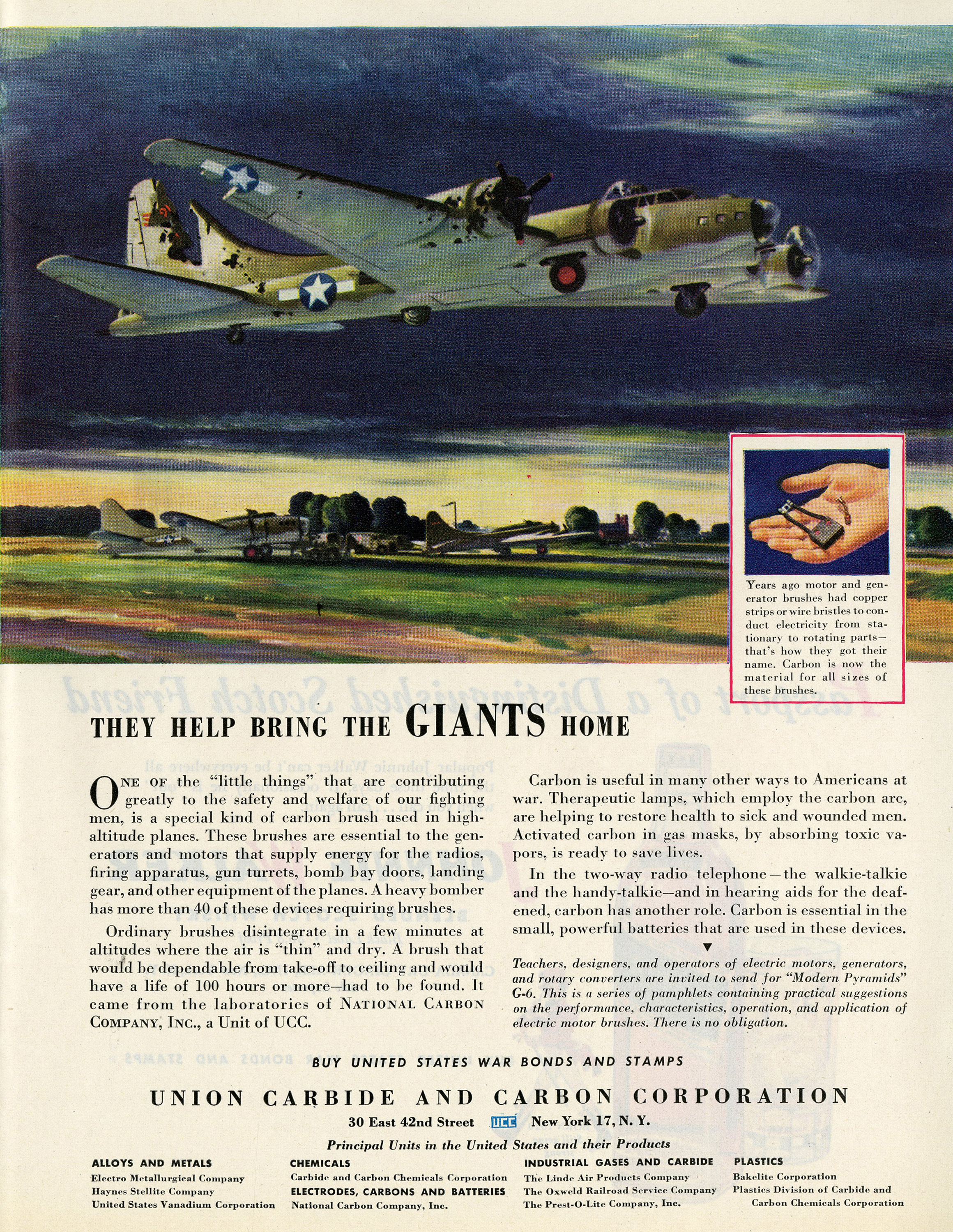
Another thing that shows up in these pictures are thunderstorms. You see all these white dots on Earth. And then you realize that that’s one thunderstorm as a function of time because it’ll go flash and then orbital motion and Earth motion will move it to a new location, and then it’ll go flash again, and you can see cloud detail that’s consistent from flash to flash.
Editor’s note: Many fans and space photo enthusiasts have made videos using Pettit’s star trail images. See one of the best below created by cinematographer and friend of Pettit’s, Christoph Malin.
MT: Could you describe for our readers how exactly images get from the Space Station and back down to Earth.
DP: My first flight we had film. I was on Station when Columbia happened and our flight was extended for 5 1/2 months, and shuttles didn’t fly for another 2 1/2 years. That basically ended film. Fortunately the technology at that time was such that digital cameras were just coming into the point where they could take the place of film. So since 2003, we’ve done nothing but digital photography.
All the digital images come down through a high-speed data link. We call it Ku-band, and it’s basically in the gigahertz range. It’s a high bandwidth, a high data rate capability, and it goes through the TDRSS Satellite System, which is at geostationary orbit, and then back to the ground. We transmit all our video down and all our digital still imagery down via the TDRSS System.
MT: About how long does that take?
DP: At the time I was there, we could do about 50 megabits per second — and there’s a lot of other data that needs to go down so you can’t use that whole bandwidth just for imagery. When I was last there in 2012, we could get down about 100 gigabytes of images a day. I think it’s probably a factor of four or five times faster now because they did a big upgrade on the Ku-band capability since I flew.
MT: I’ve been working with TIME Senior Editor Jeffrey Kluger on various articles over here about space photography – from the Deep Space Network, to Earthrise, to the Apollo 15 mission. I was wondering from your perspective, what kind of impact do you think photography has on the space program, especially photography taken by astronauts. Is there a scientific element to it? Do you think it’s more historical? And in what ways do the photos astronauts take and share affect the space program?
DP: Actually it affects the space program in all of those ways. One, we are explorers, and we’re going off doing something that’s really unusual that most people can’t participate in themselves. Explorers [have always taken] pictures and always shared the adventures with people that stayed back home. We are doing the same thing. Part of the purpose is [also] to record engineering details in terms of how the spaceships and the spacecraft are operating and how the hardware is performing in space.
And then there’s a scientific aspect, particularly of the Earth observation photography. [The photos become] a scientific data set because we have pictures of, say, changes in the Amazon River over more than a decade now. These photographs augment the satellite database because a person taking a picture sees things that are different than what a satellite is programmed to take pictures of. Most satellites are programmed to be over certain areas at local noontime because the shadows make it so you can get better detail of the ground. Astronauts float over Earth at all different sun angles and all different shadow angles, and we’ll take pictures that show different things. I’ve got a classic set of pictures of New York City taken by satellites and New York City taken by astronauts. They show the same thing, but the detail is different because the shadow structure is different. Satellites are programmed for one thing and people are not programmed, so we’ll take pictures of other things.
Polar mesospheric clouds is [another] example of a natural phenomenology that’s easy to observe from orbit but difficult to see from Earth. If you consistently take pictures of these polar mesospheric clouds — or noctilucent clouds is another name — all of a sudden you develop a scientific database that could be useful. [Astronauts] get to see them on a different length scale than say a scientist on the ground recording messages of the noctilucent clouds.
Another interesting thing — a student at Portland State University in Portland, Oregon, Nathan Bergey — he’s a data analyst. He [downloaded] all the images from Space Station – at the time he did this, there was [something] like 1.2 million pictures taken from the ISS — and he just plotted their GPS coordinates on a map of the Earth. Some really fascinating things came out from that.
I like to use that as an example where there’s scientific value in this data set that even transcends what the images are. The fact that somebody took a picture at a certain point over Earth…in itself becomes scientific data.
MT: So the photos from the Space Station are in certain ways artistic, and in other ways they are raw data for anyone to work with.
DP: That’s right. [Bergey] started off with just a blank Earth, nothing on it except for the latitude and longitude coordinates. And then he put a dot for every time one of the 1.2 million pictures were taken, and you can see the outline of all the major continents.
And then there are holes. Like over Peru and over the Congo, you’ll see — well, there’s not many pictures. That’s because those two places are always cloudy, and after [an astronaut takes] a few pictures of the clouds, then you say, “I’m not going to take any more pictures of clouds.” Fascinating dynamics show up just because you’ve simply put a point on a blank page that matches the geographic location of every picture that’s been taken from the Space Station.
MT: And that’s some interpretation of data that then could make its way back to NASA and the astronauts that are currently on the Space Station, right?
DP: That, or somebody from a psychology or sociology point of view could analyze that data. Just the idea that there is value in the pictures that transcends their imagery — the fact that a human being thought that it was worthwhile to take a picture at this point on Earth — that information becomes an interesting data set.
MT: Thank you so much, Don. It was really a pleasure to talk to you, and thank you so much for taking the time.
DP: You know, photography is fun. Photography from space is even more fun. Anyway, I have to get back and finish writing. I’m about halfway through this Astronauts’ Guide to Photography in Space.
MT: Well, I’ll let you get back to it, and thank you again.
This interview has been edited for length and clarity
Correction: The original version of this story has been updated to clarify a quotation from Donald Pettit. His comments regarded “astro photography.”
Donald R. Pettit, Ph. D. is a NASA astronaut with a doctorate in Chemical Engineering. He was a staff scientist at Los Alamos National Laboratory, Los Alamos, New Mexico from 1984 to 1996. Selected by NASA in April 1996, Dr. Pettit reported to the Johnson Space Center in August 1996. A veteran of three spaceflights, Dr. Pettit has logged more than 370 days in space and over 13 EVA (spacewalk) hours. He lived aboard the International Space Station for 5-1/2 months during Expedition 6, was a member of the STS-126 crew, and again lived aboard the station for 6-1/2 months as part of the Expedition 30/31 crew. Follow him on Twitter @astro_Pettit.
Mia Tramz is an Associate Photo Editor for TIME.com. Follow her on Twitter @miatramz.
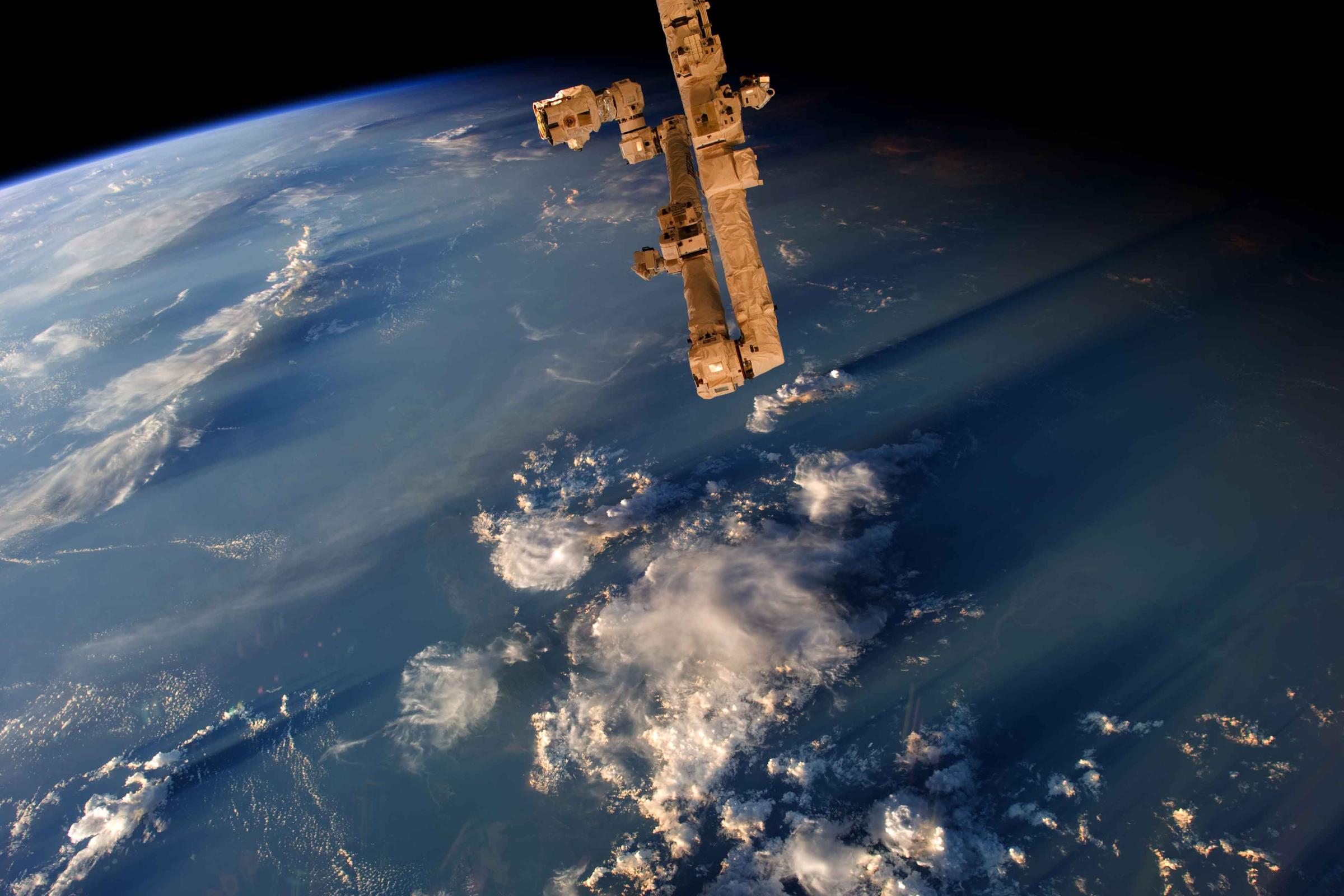
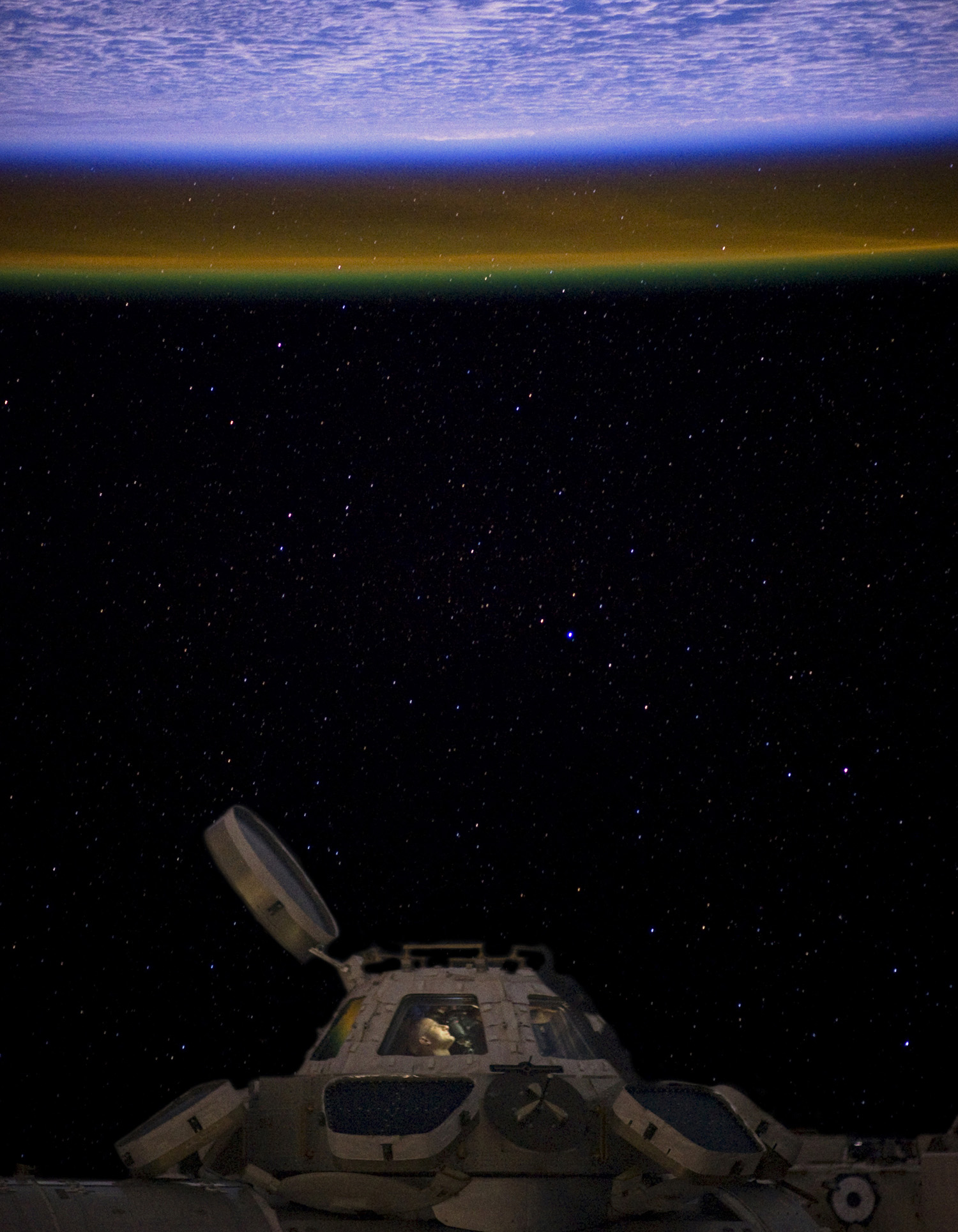
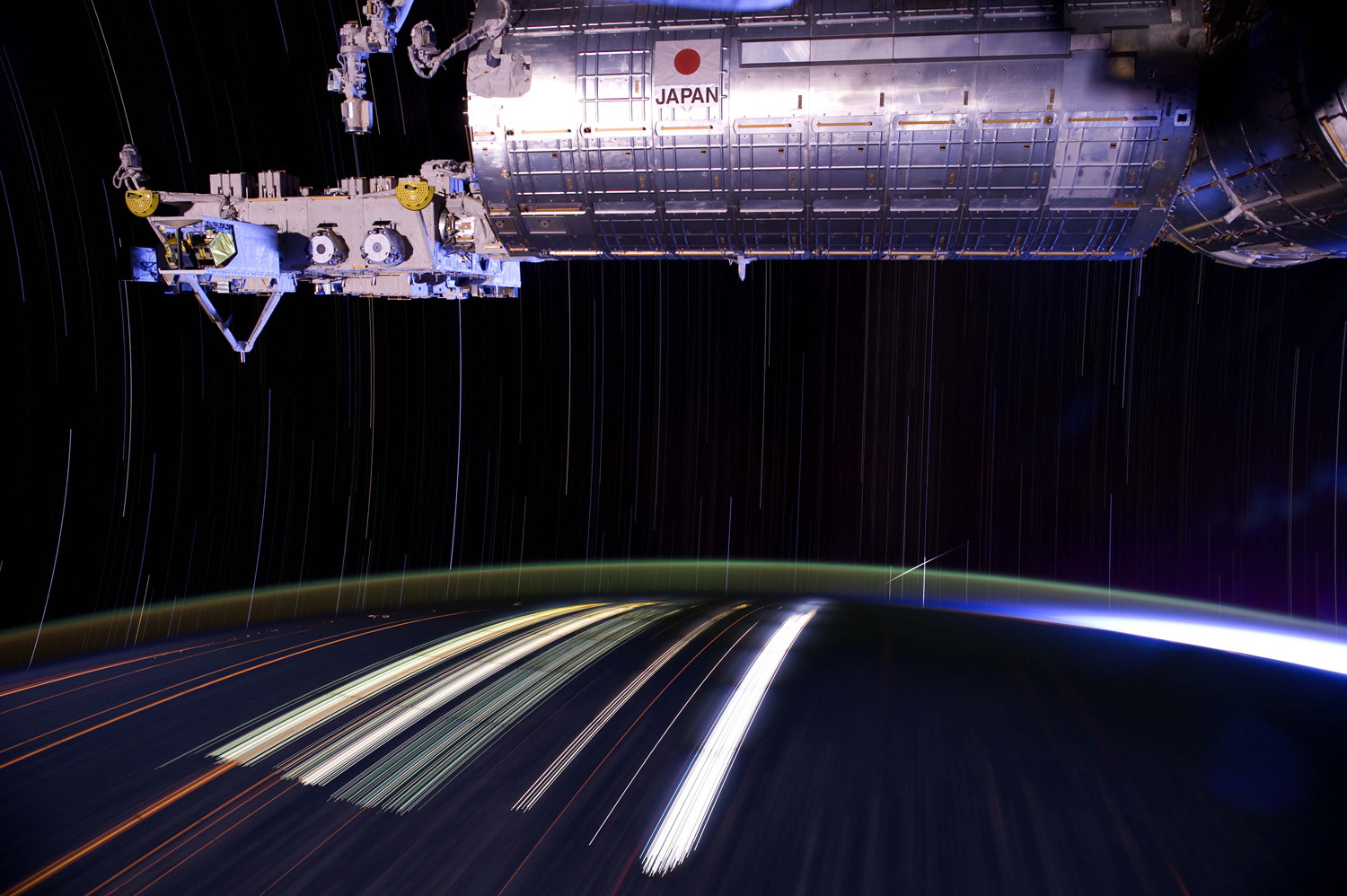
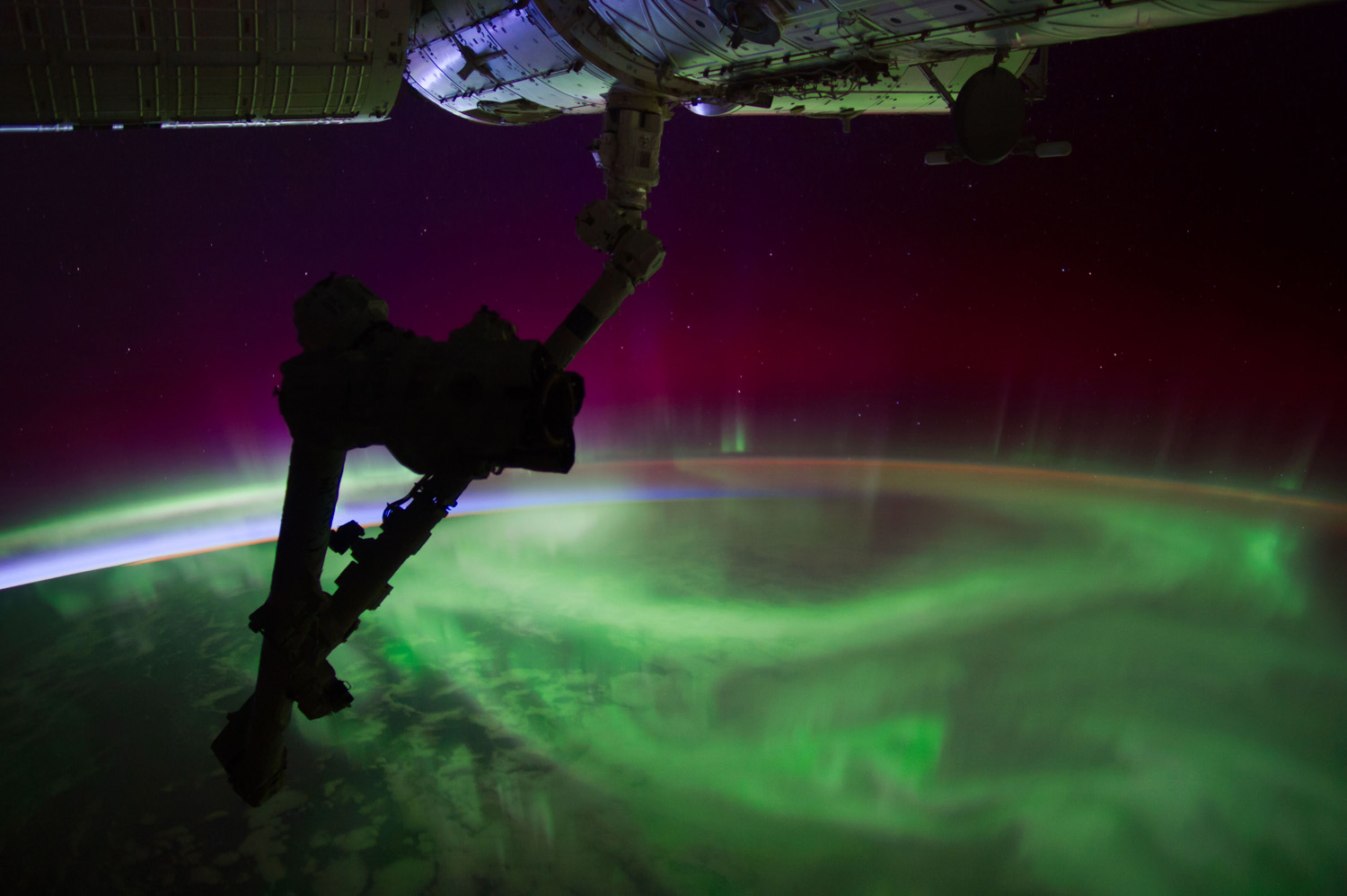
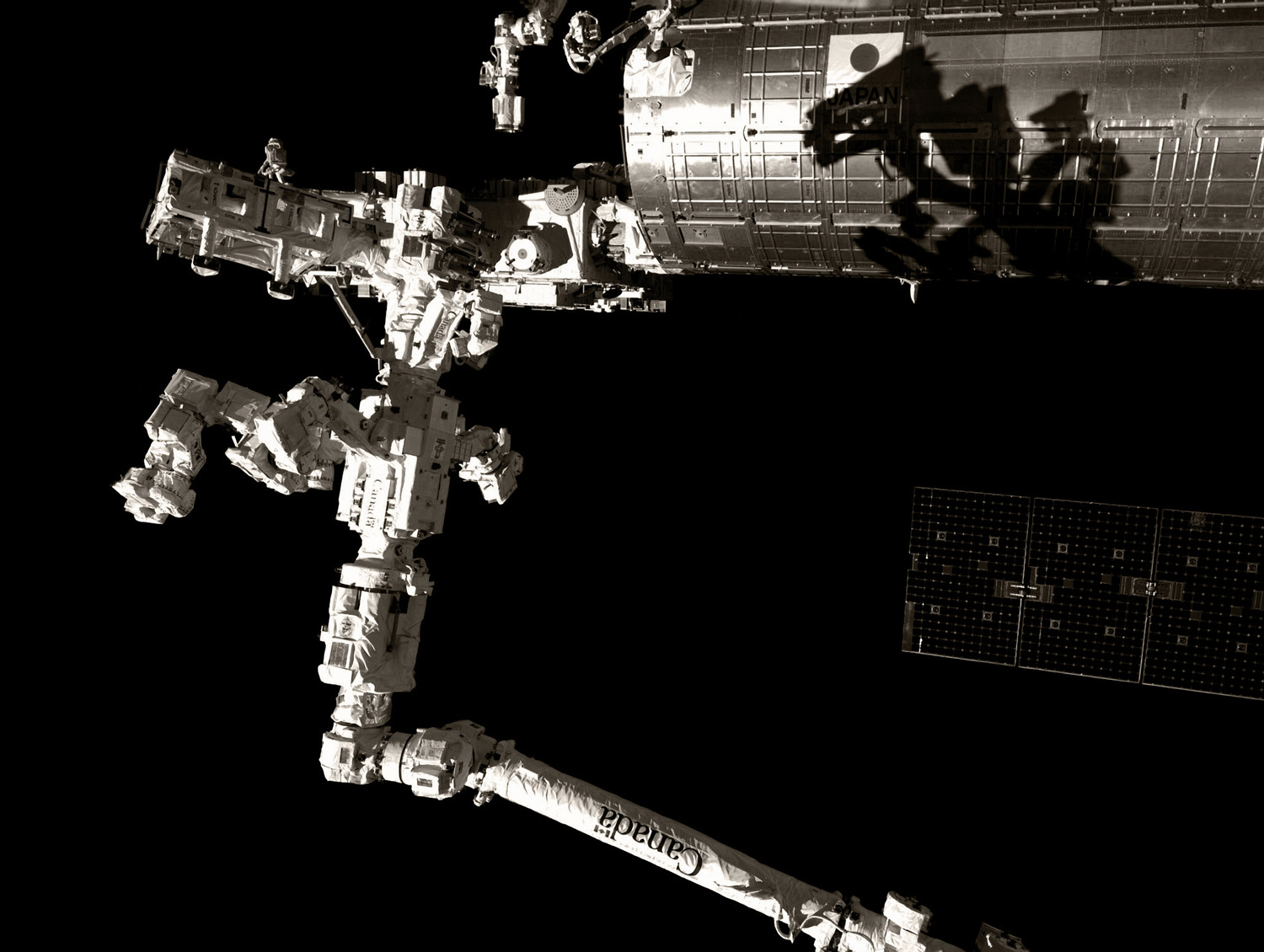
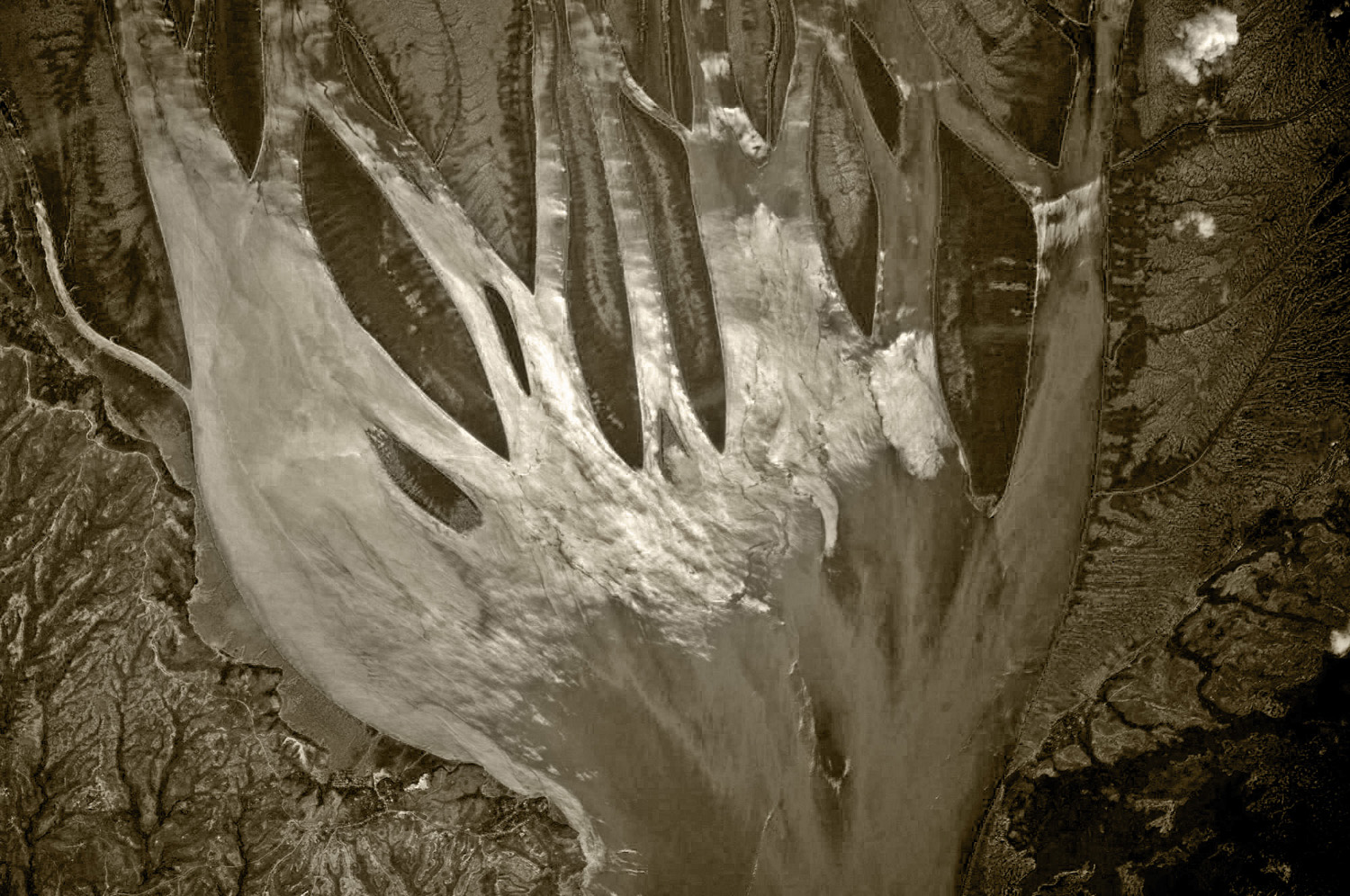


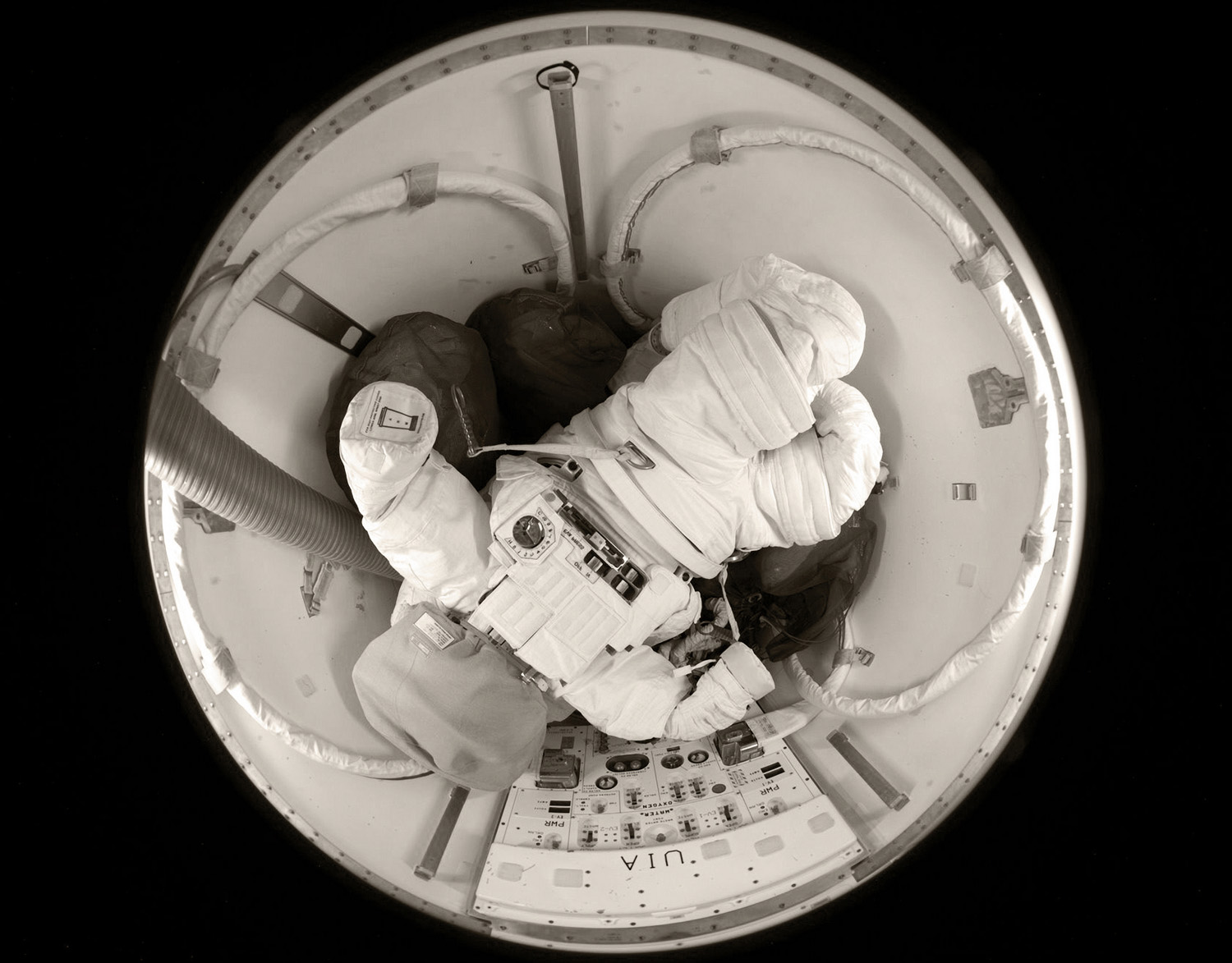

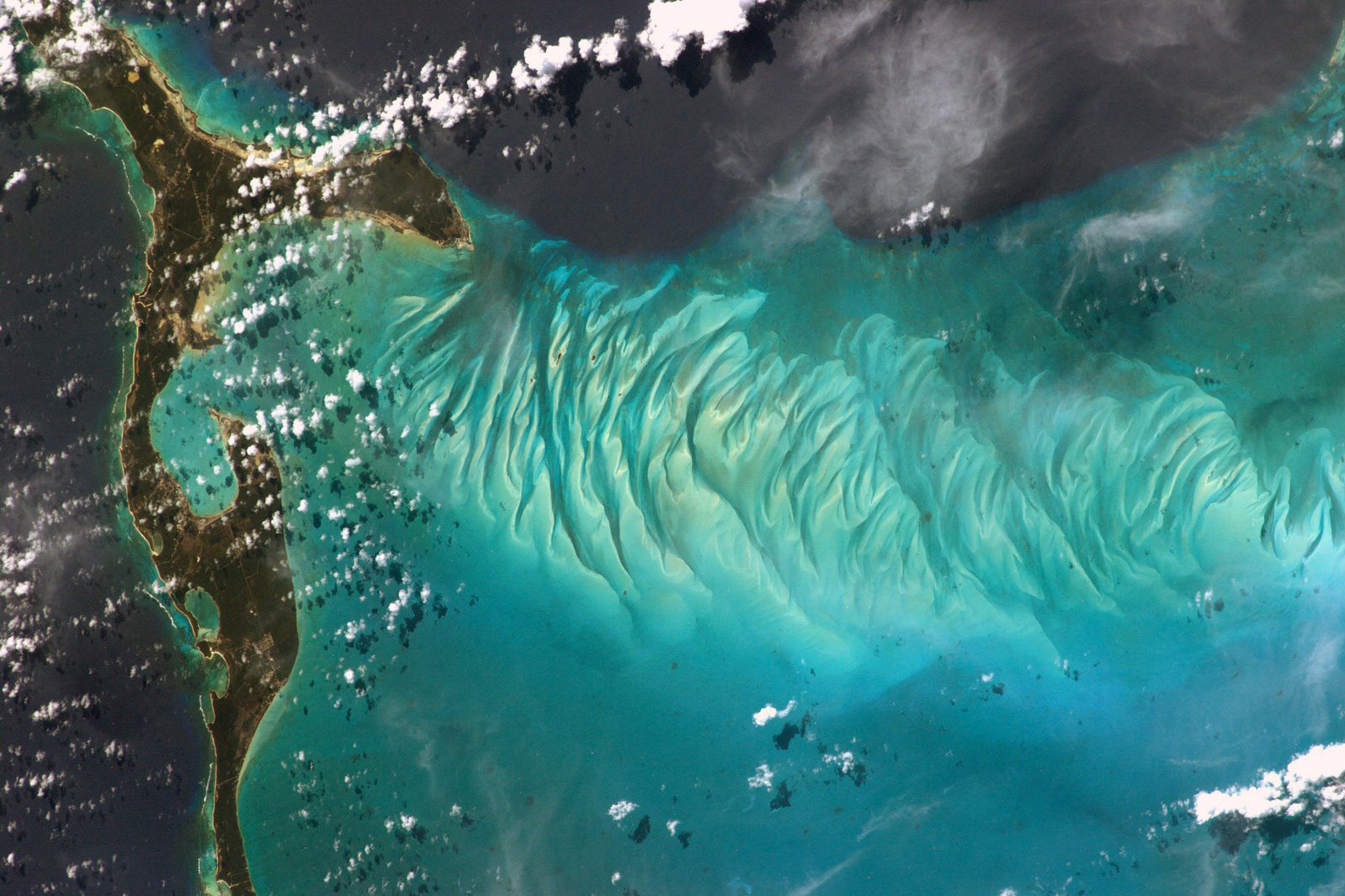

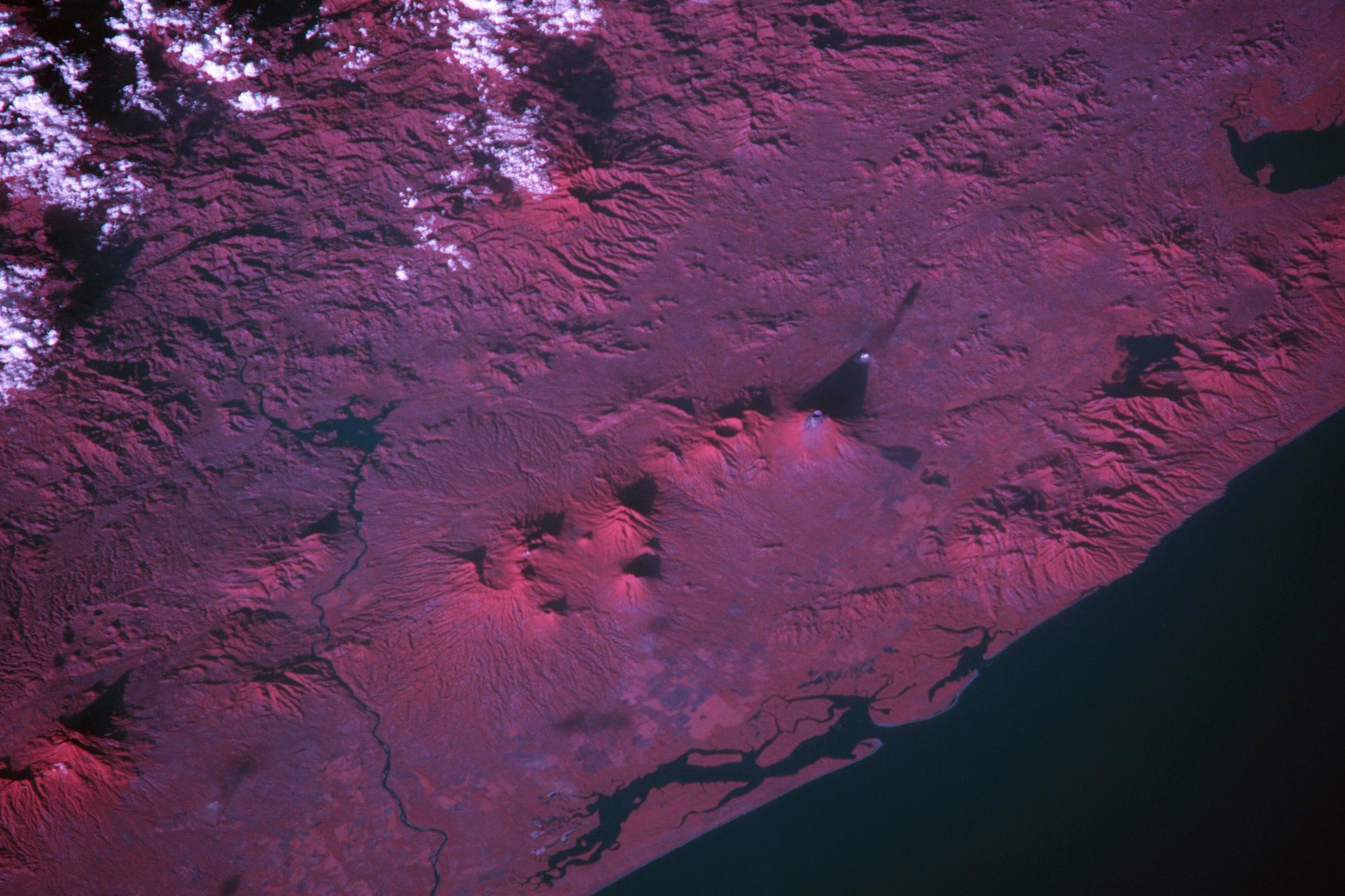
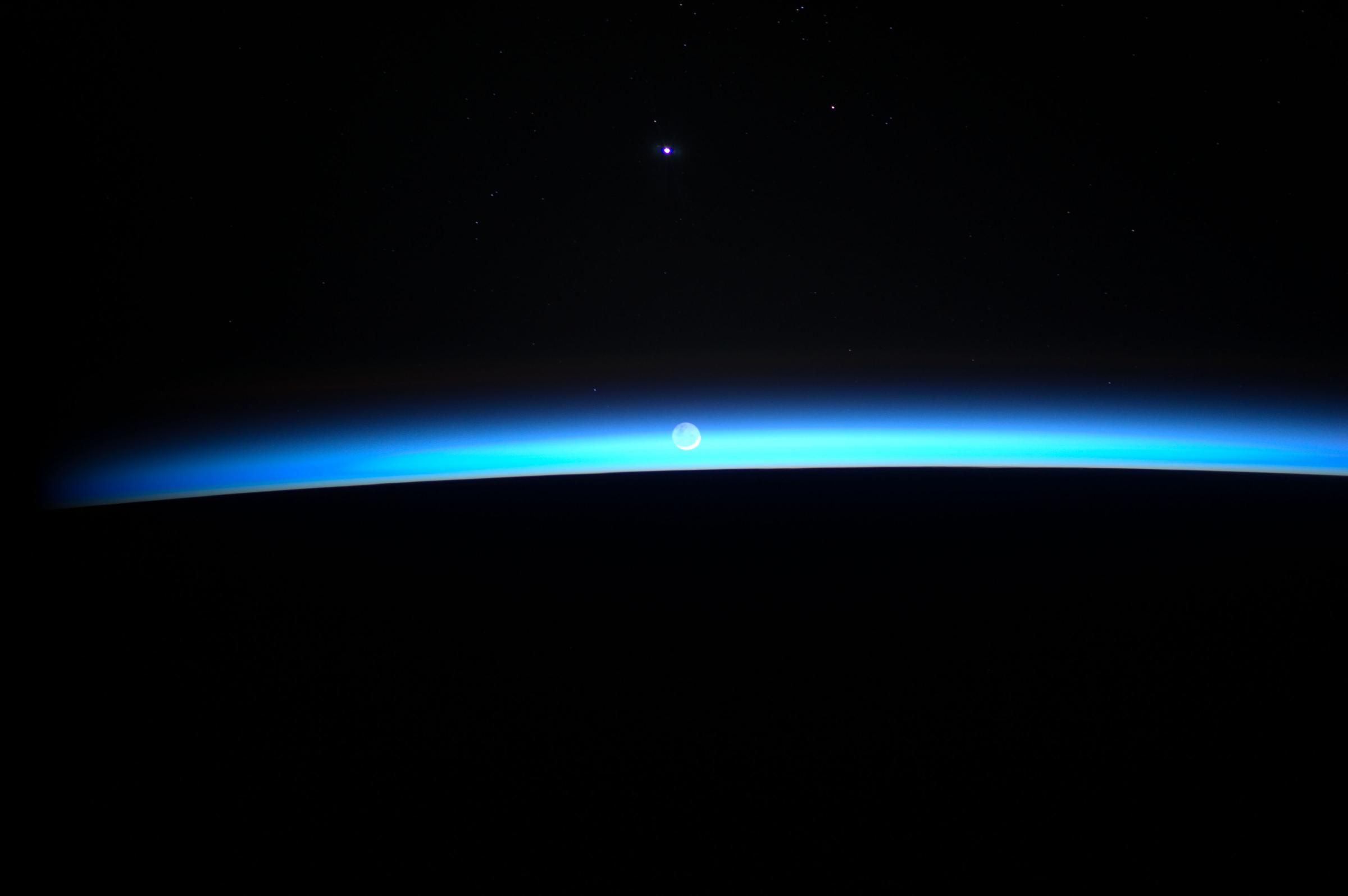
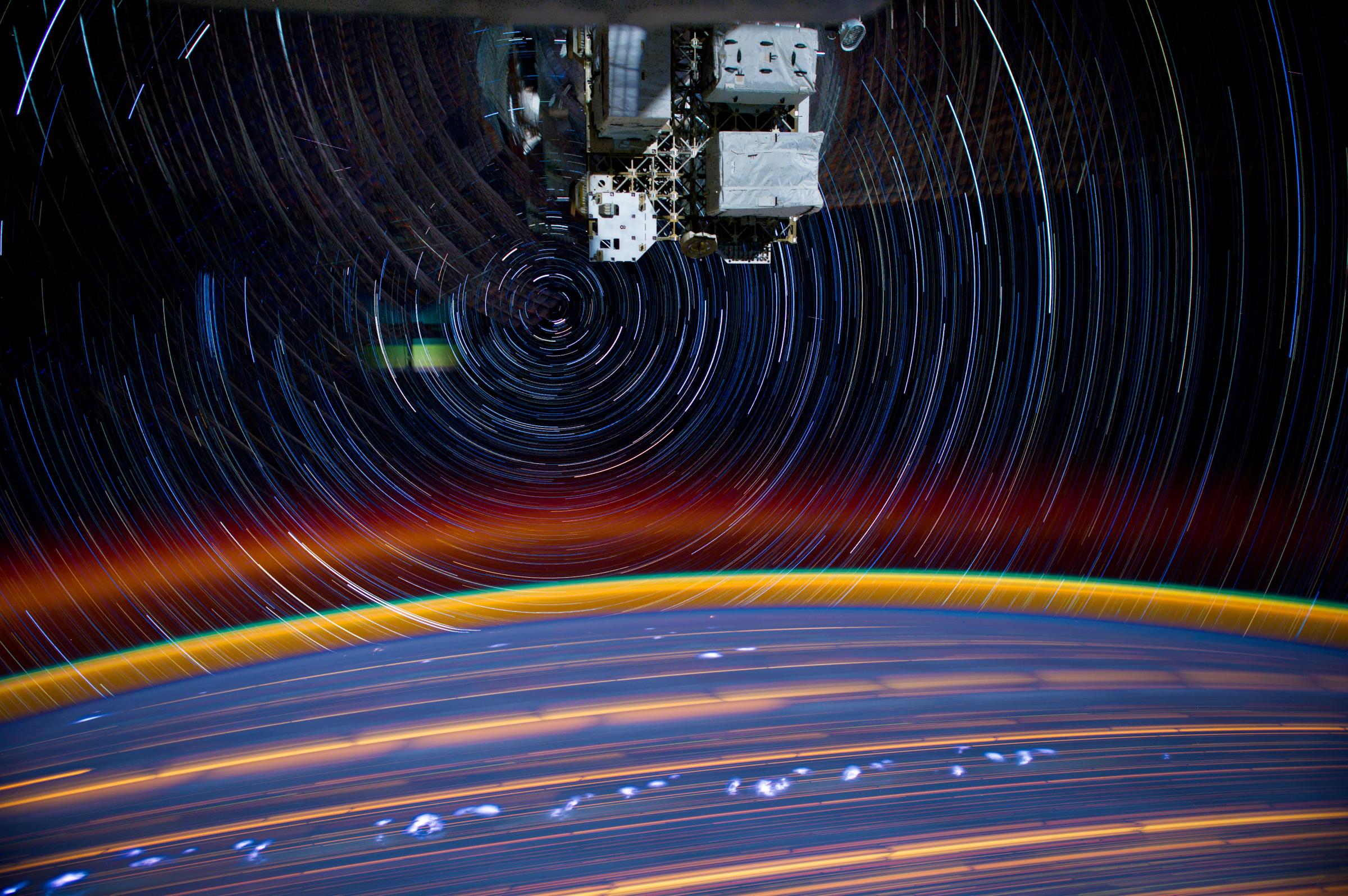
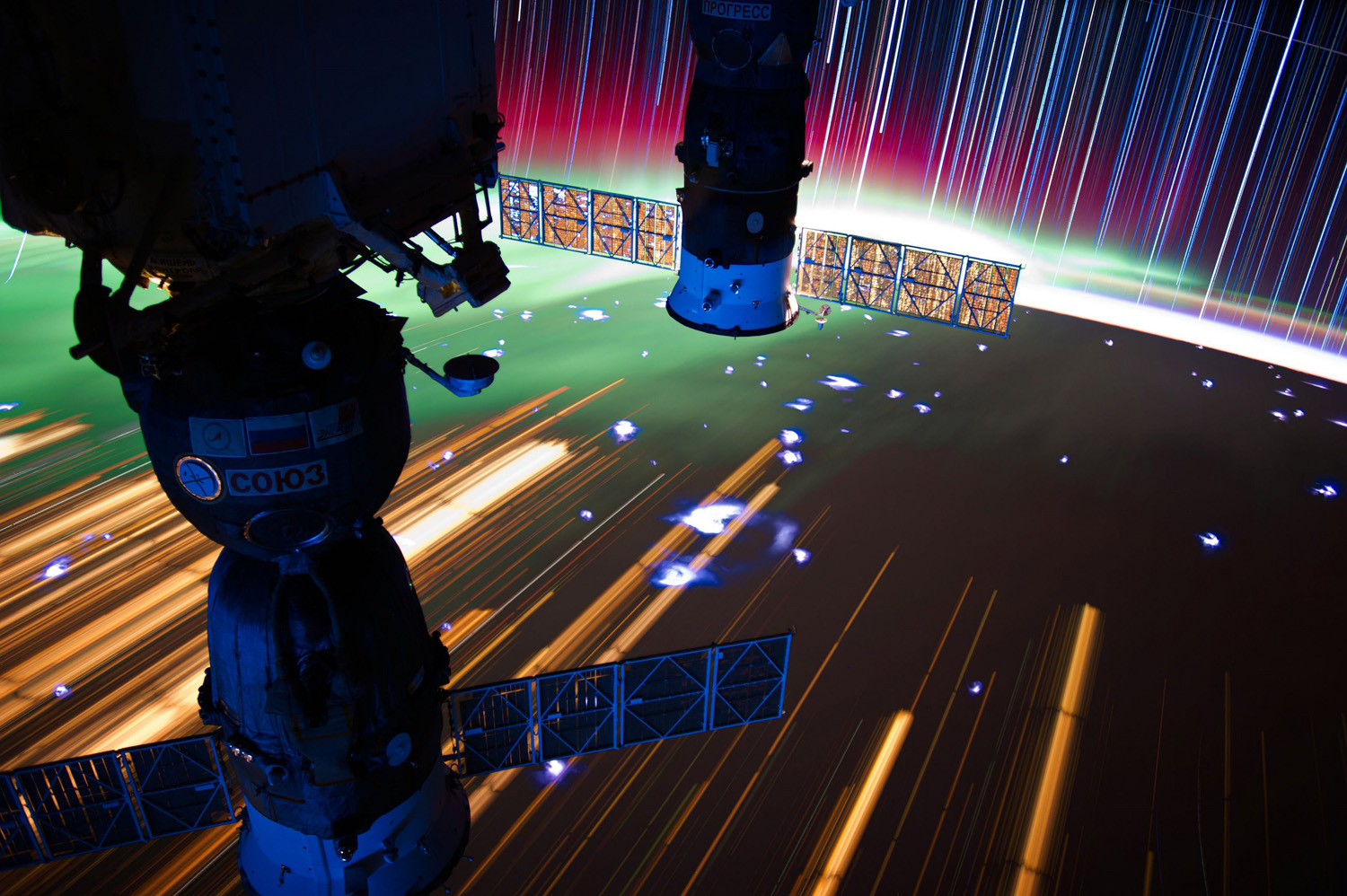

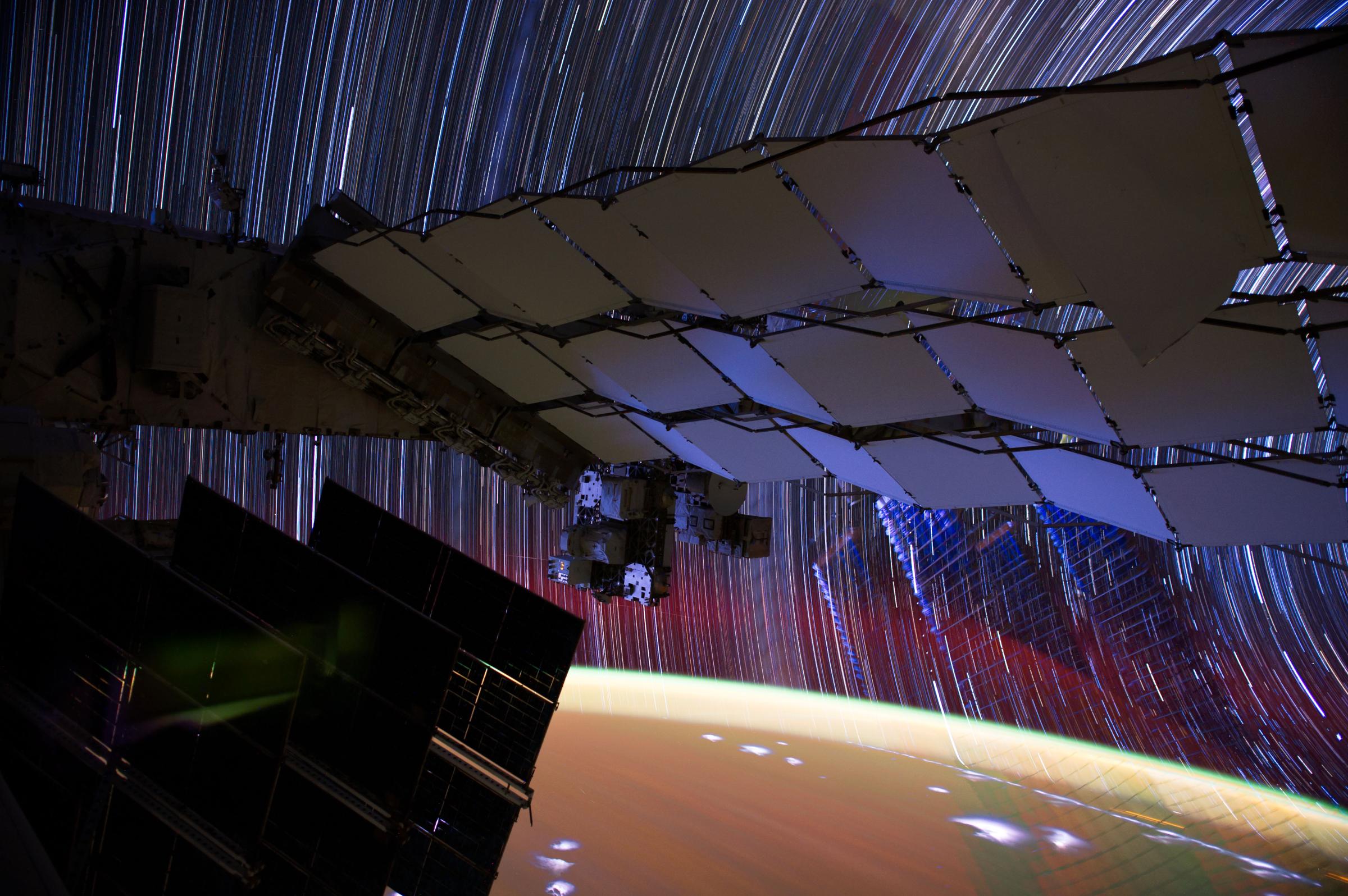
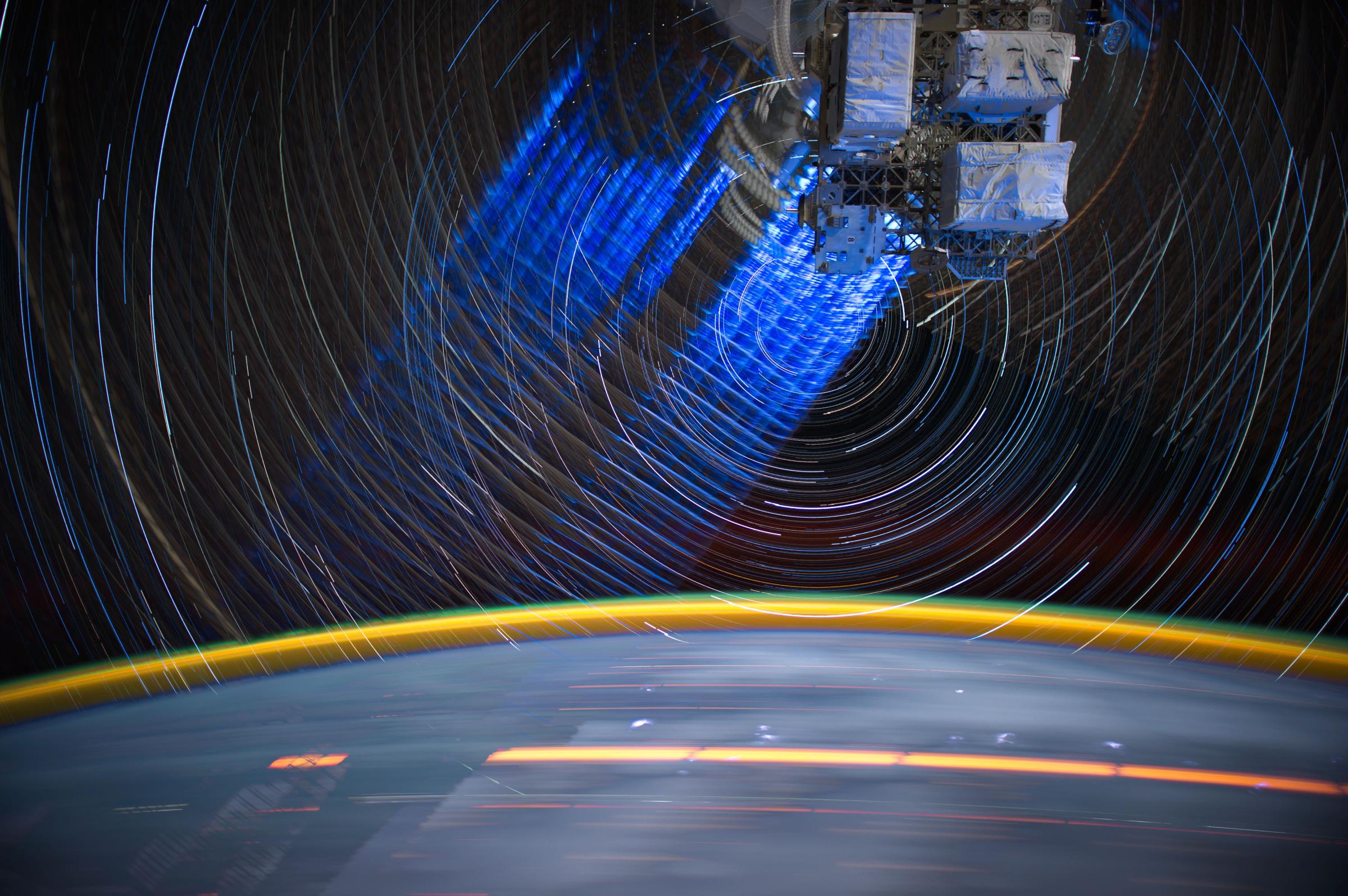
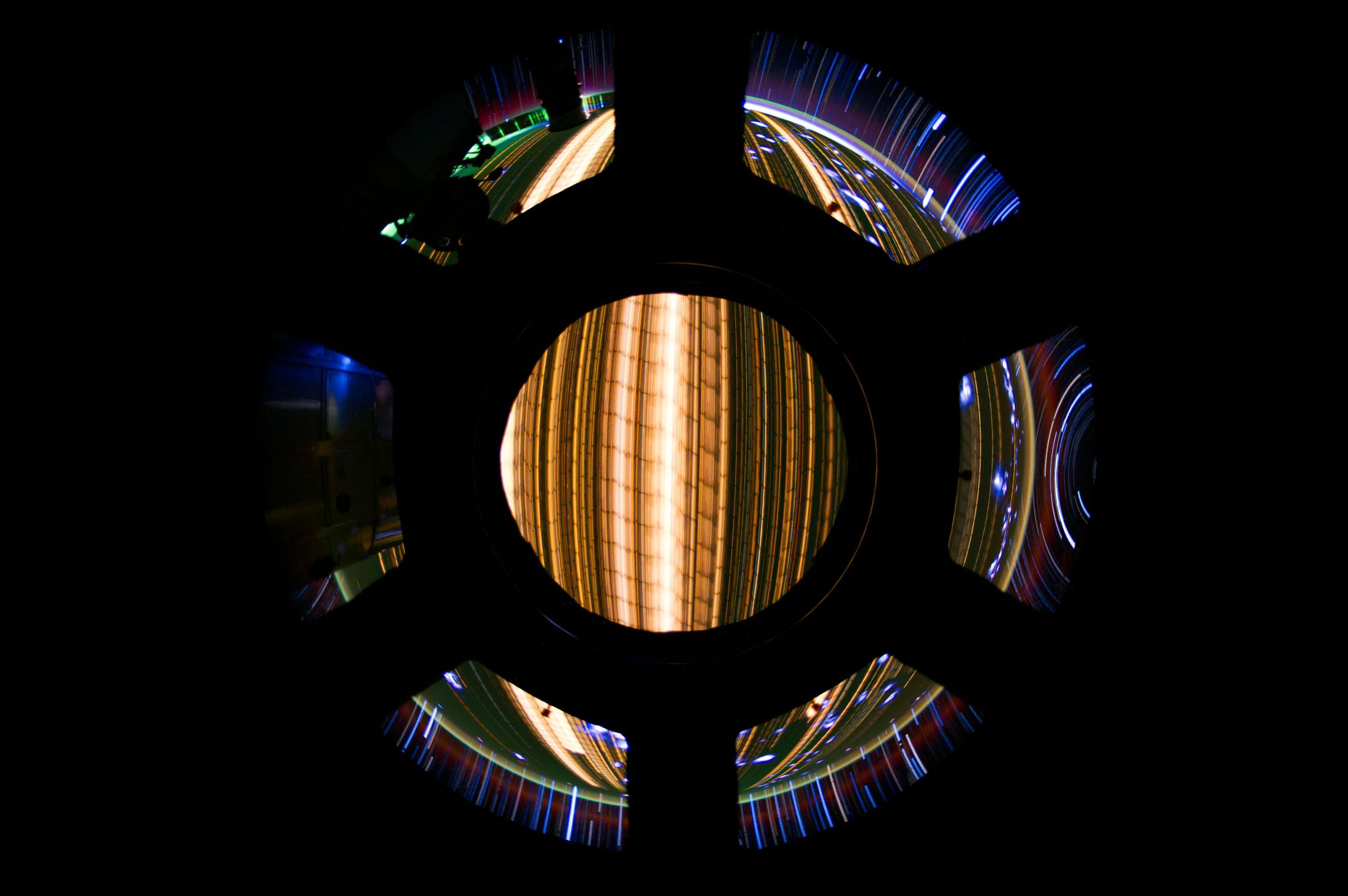
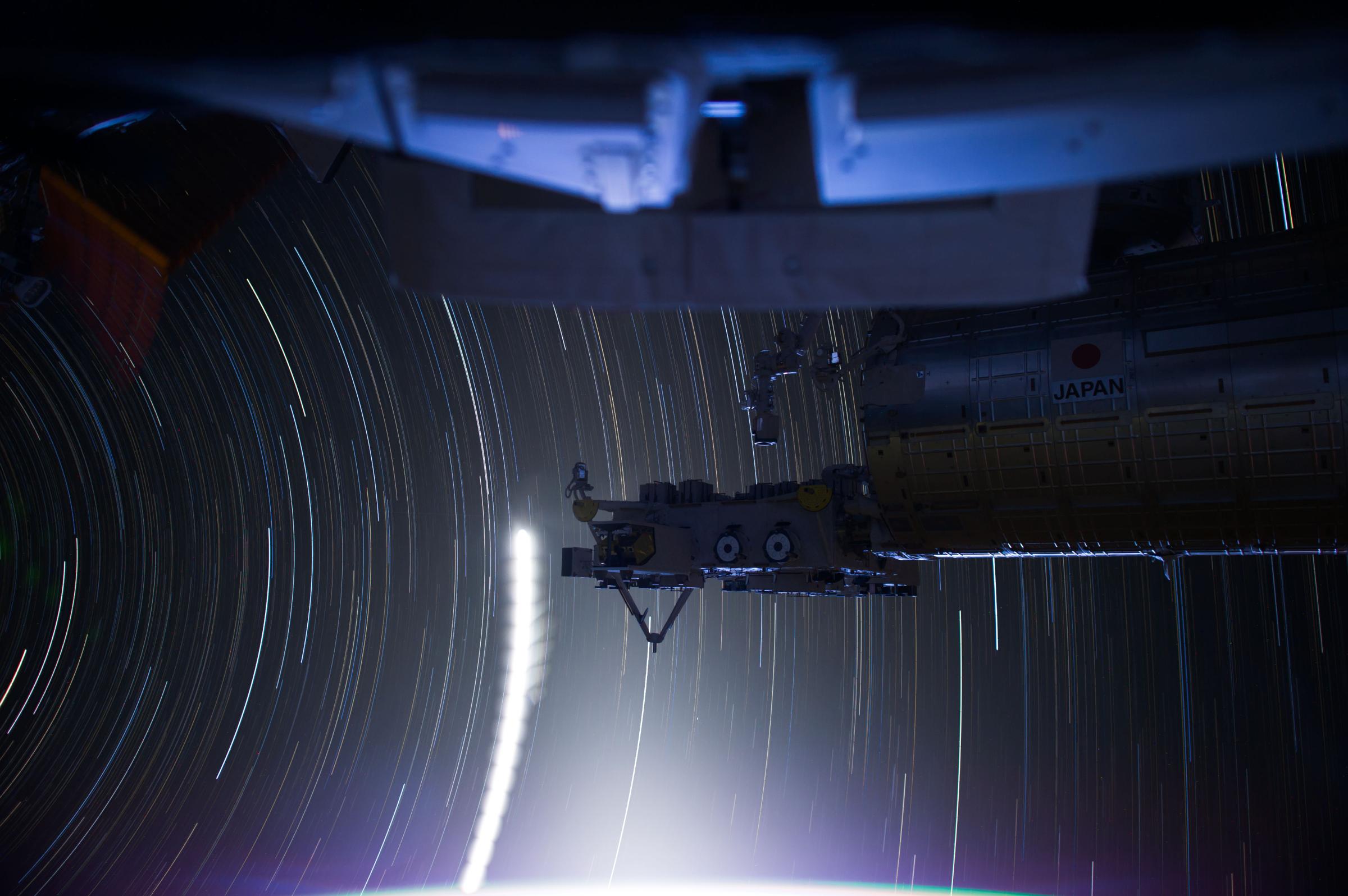
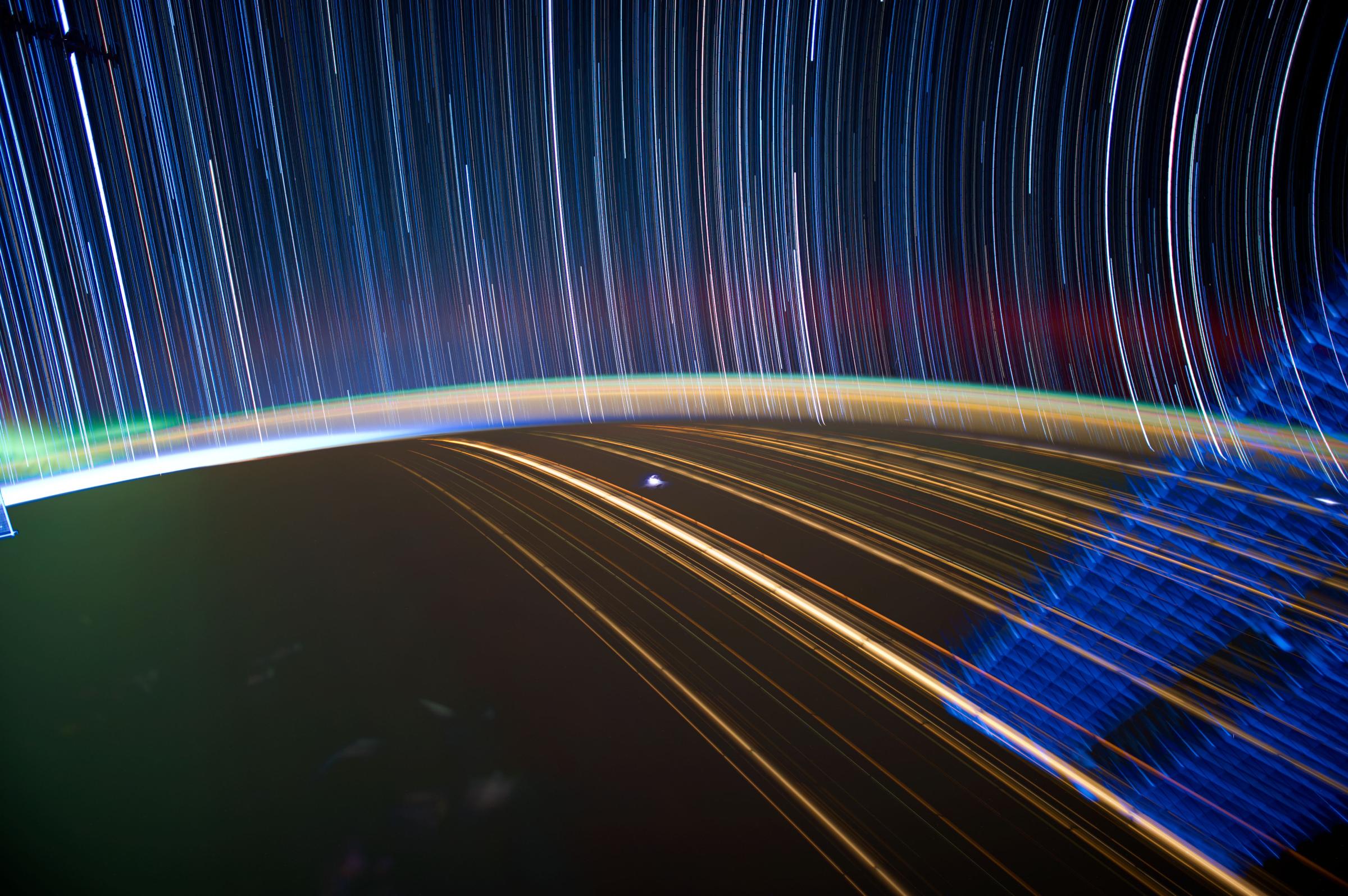
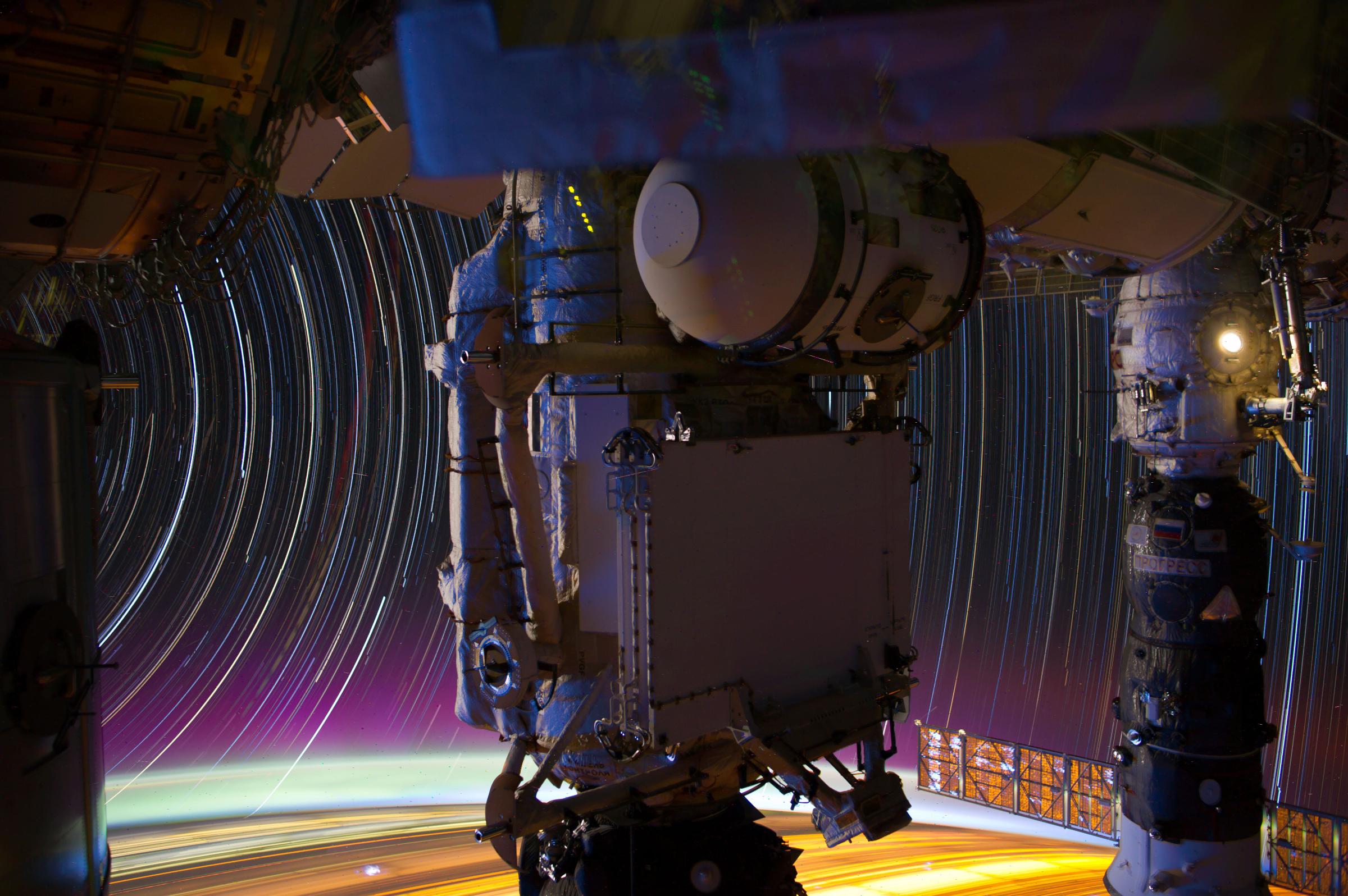

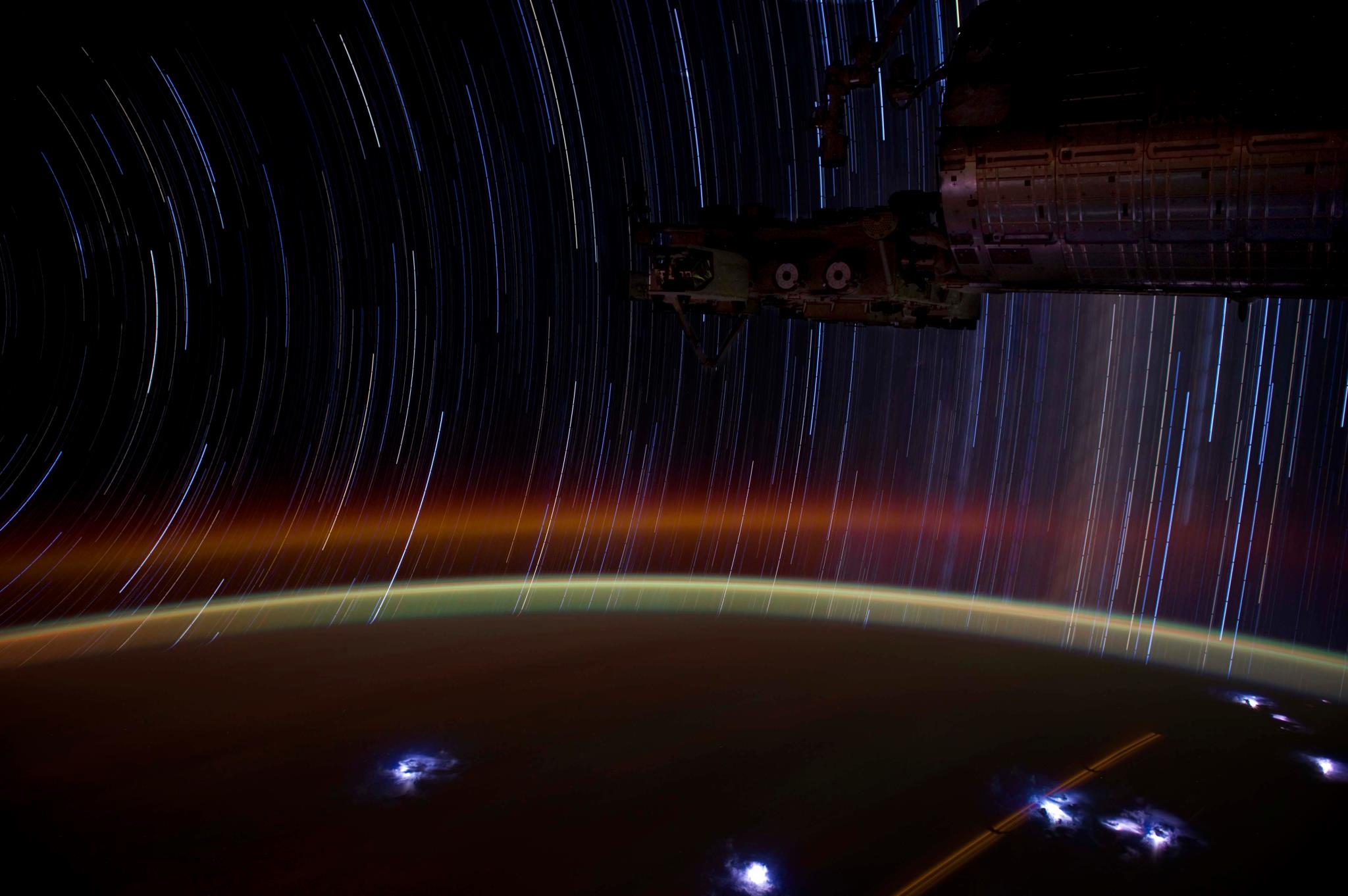
More Must-Reads from TIME
- Cybersecurity Experts Are Sounding the Alarm on DOGE
- Meet the 2025 Women of the Year
- The Harsh Truth About Disability Inclusion
- Why Do More Young Adults Have Cancer?
- Colman Domingo Leads With Radical Love
- How to Get Better at Doing Things Alone
- Michelle Zauner Stares Down the Darkness
Write to Mia Tramz at mia.tramz@time.com